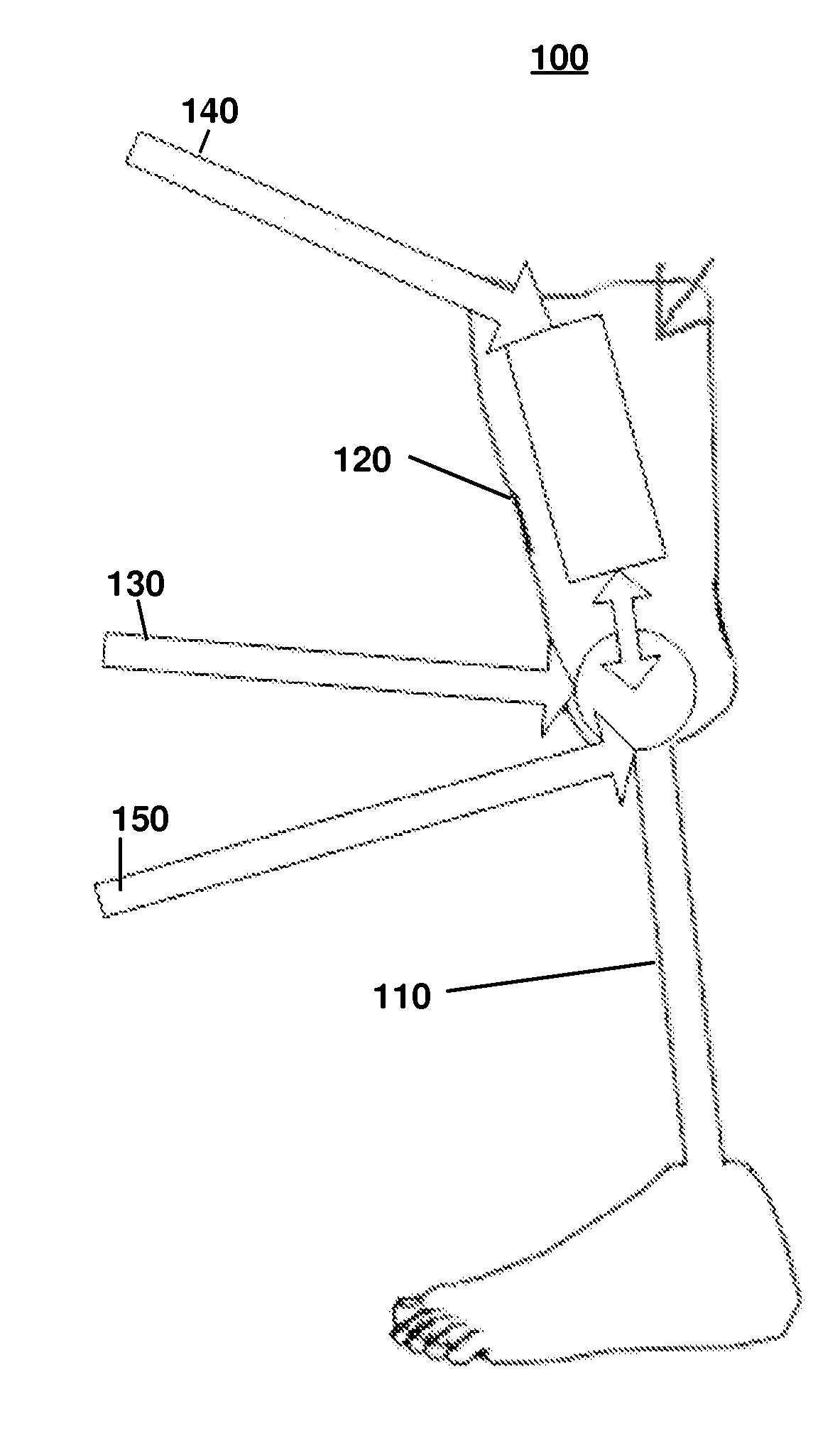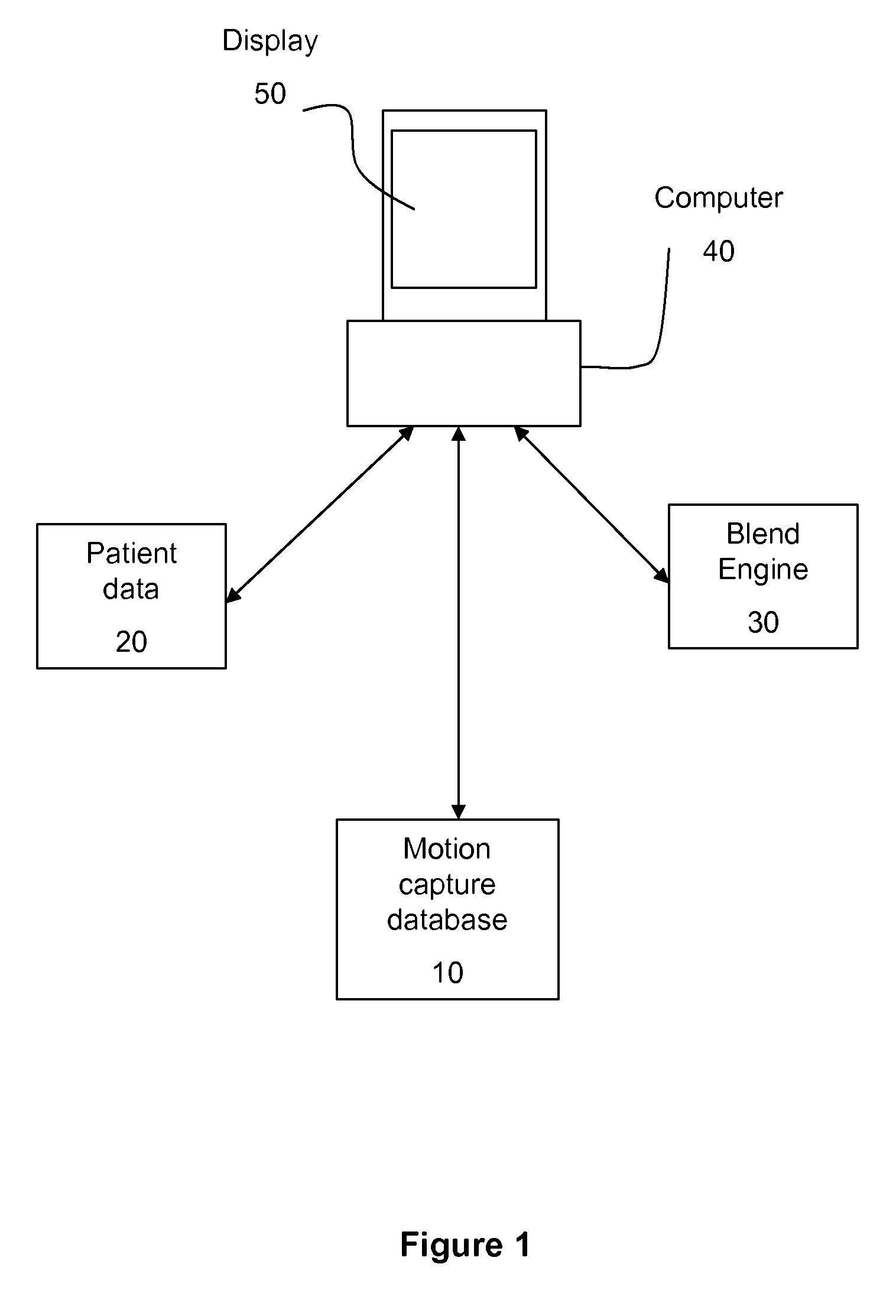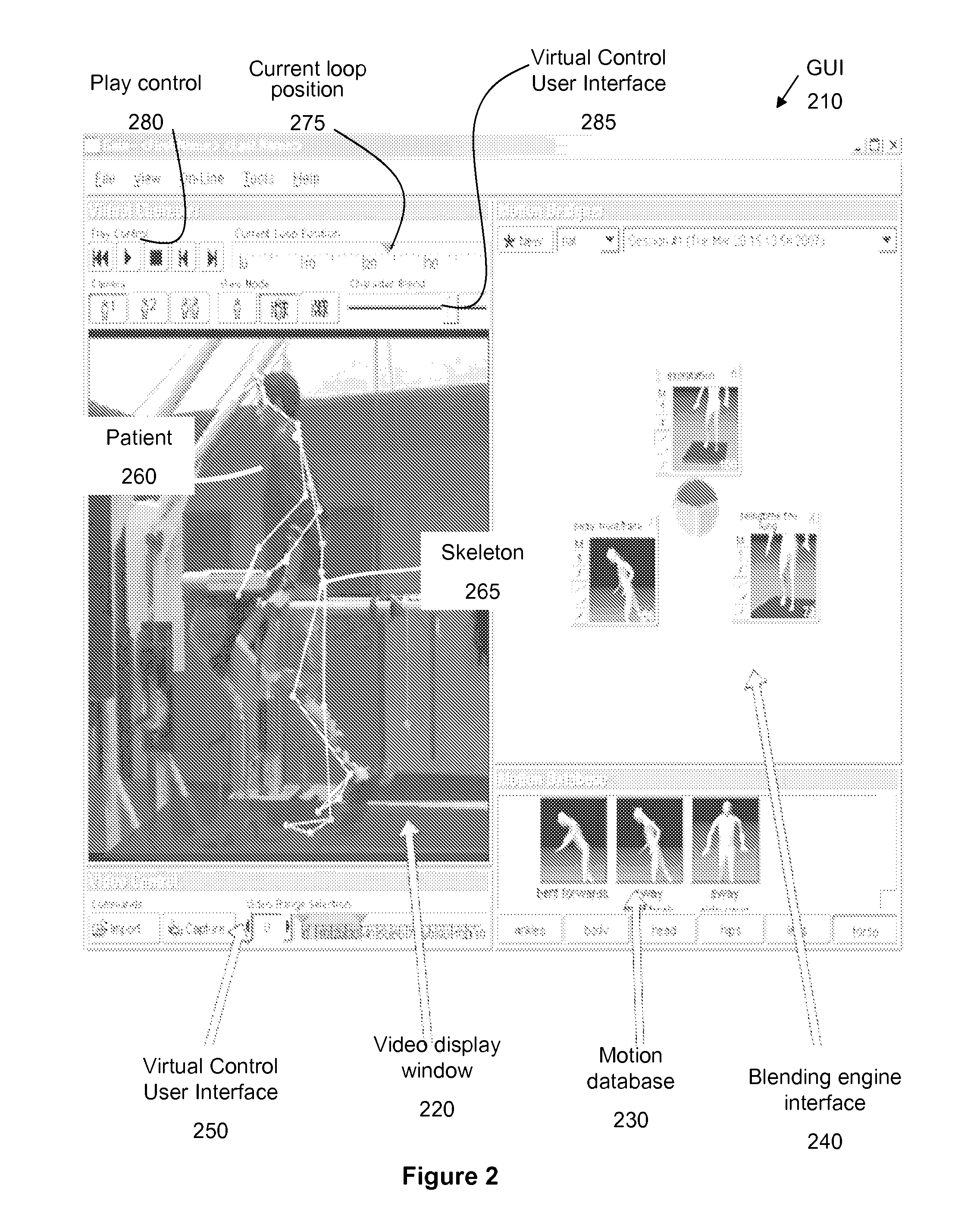Method and system for real time interactive dynamic alignment of prosthetics
a dynamic alignment and prosthetic technology, applied in electrotherapy, diagnostics, applications, etc., can solve the problems of inability to achieve optimal alignment, inability to adapt to other user groups, and state of the art lack of known dynamic alignment systems or methods, etc., to achieve optimal dynamic alignment, optimal functional performance, and adaptability to other user groups
- Summary
- Abstract
- Description
- Claims
- Application Information
AI Technical Summary
Benefits of technology
Problems solved by technology
Method used
Image
Examples
Embodiment Construction
[0074]After the static alignment process of a prosthetic, a dynamic alignment is required. The dynamic alignment of a prosthetic limb is typically a visual estimative process that is subject to the skill and experience of the specialist doing the alignment. Such visual observation typically requires viewing the patient commence activity with the prosthetic attached and noting movement and querying the patient about discomfort.
[0075]Various embodiments of the present invention provide tools that are useful in numerous applications, including the diagnostic and rehabilitation industries. This system allows or provides for the visualization of possible errors present in the prosthetic alignment for any given movement in real-time.
[0076]Motion blending is a term for a variety of techniques. Many motion editing algorithms, including transitioning and multi target interpolation, can be represented as instances of a more general operation called motion blending. Some use data structures ca...
PUM
 Login to View More
Login to View More Abstract
Description
Claims
Application Information
 Login to View More
Login to View More - R&D
- Intellectual Property
- Life Sciences
- Materials
- Tech Scout
- Unparalleled Data Quality
- Higher Quality Content
- 60% Fewer Hallucinations
Browse by: Latest US Patents, China's latest patents, Technical Efficacy Thesaurus, Application Domain, Technology Topic, Popular Technical Reports.
© 2025 PatSnap. All rights reserved.Legal|Privacy policy|Modern Slavery Act Transparency Statement|Sitemap|About US| Contact US: help@patsnap.com



